Mission
The Bronx Blood Research Fund (BBRF) provides excellence in research and advances therapy and management of the thalassemias and the hemoglobinopathies, two major groups of blood disorders.
Research
The BBRF supports “bench-to-bedside" and "bedside-to-bench” research and education to benefit patients with thalassemias and hemoglobinopathies, locally, nationally, and globally. As government funding for minority diseases has dwindled, sources of extra-governmental research funding are urgently needed to advance scientifically and therapeutically.
With a multidisciplinary team of expert clinicians and researchers committed to therapies specific to blood disorders, BBRF promotes ethnic and socioeconomic equality for patients with little or no access to healthcare, in the Bronx and throughout the world. The BBRF's goal is to develop novel platforms for the management of patients with genetic defects resulting in severe anemia and the production of abnormal red cells which impair the ability to deliver a sufficient blood supply. No other such blood disorder program strives to provide education, therapy and streamlined research to improve treatment for underserved patients and their families.
- The Bronx Blood Research Fund sponsors fellowships for young investigators who conduct significant red cell research on either a basic, translational, or clinical level.
- Clinical trials aid the translation of research for potential new therapies by enabling new approaches. Results from clinical trials inform the basic research and further advance therapy ("bedside-to-bench"). BBRF funds recruitment and retention efforts in clinical trials, including support personnel such as clinical coordinators, research nurses, and data managers who recruit for and maintain studies.
- BBRF provides support for basic research in hemoglobinopathies that will facilitate the development of novel concepts for treatment and undertake the bench-to-bedside (translational) research to transform these new important concepts into innovative therapies.
- BBRF funds continuous programs such as the transgenic mouse facility, a facility that designs and develops desired transgenic animal models to test novel concepts as therapeutic strategies for patients with blood diseases. Producing and maintaining transgenic mice in a medical facility allows initial therapeutic and translational research to be performed without worry of potential human toxicity. BBRF allows investigators to plan their studies knowing that these highly specialized genetically bred mice, so vital for the initial (pre-human) therapeutic experimentation, are available when needed.
- BBRF investigators confer and often collaborate with their counterpart international experts in the field. They interact with legal, financial, and nongovernmental organizations that have expertise in developing and maturing new therapies.
Education
The BBRF recently sponsored a Red Cell Symposium with talks and discussions spanning the many different pathologies of the red cell, including thalassemia, malaria, sickle cell, vessel wall interactions, and transfusion pathology. These meetings, to be held yearly, are venues for interaction and interchange of ideas.
Beginning in 2013, BBRF will host Montefiore Medical Center’s Sickle Cell Awareness Day. Efforts will include posters, flyers, public sickle testing, and opportunities for the community to have direct interaction with knowledgeable medical staff who can answer medical questions. BBRF education efforts will develop programs with the help of web-based communications and social media, and these “awareness days” will be tailored to each destination as BBRF extends globally.
Additionally, Bronx Blood Research Fund investigators deliver lectures on sickle cell disease to academic communities throughout the country by request.
Patient Population
Sickle cell disease affects 90,000 to 100,000 Americans, or 1 out of every 500 Black or African-American births. About 1 in 12 African Americans carry the gene for sickle. Montefiore Medical Center, located in the Bronx, is home to over 2,250 patients with sickle cell disease. The Bronx has traditionally been home to some of the poorest, most vulnerable populations in New York, and sickle cell disease severely strikes the black population of this underserved borough.
There are fewer patients with thalassemia major in the US, approximately 1000, but the coexistence of thalassemia trait with Hb E, a hemoglobin variant found typically in the Asian population, is increasing the severity of disease in patients with thalassemia trait, a more typically benign condition. The Asian population is increasing in the Bronx and the admixture of other hemoglobins, like Hb E, with thalassemia and with sickle are becoming more commonplace – and causing more morbidity.
Clinical therapeutic studies on this population require extraordinary efforts and funds to ensure enrollment not normally provided for in routine trials. The Bronx Blood Research Fund is committed to continuing the quality of research and improving the management now given to these patients in order to further medical progress for these underserved minority populations. The Fund supports recruitment and retention efforts and, with the help of web-based communications and social media, is developing a coherent patient base.
Investigators
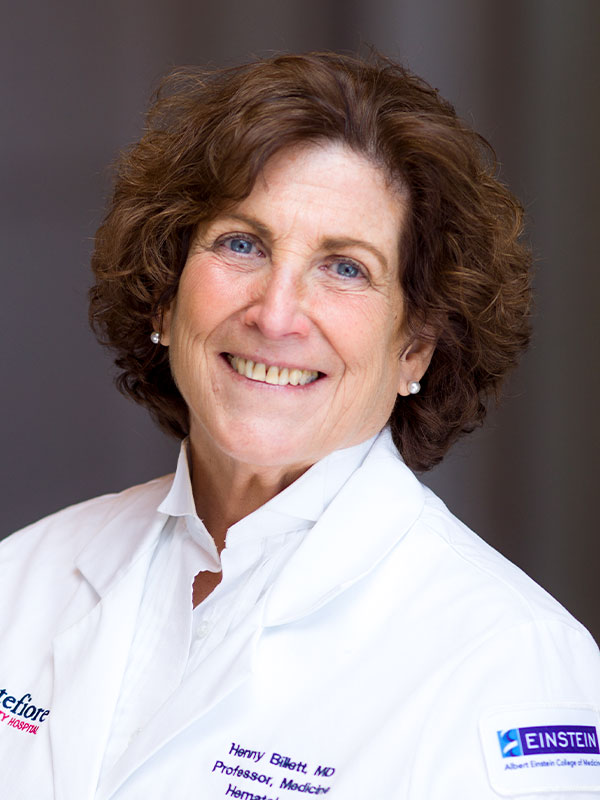 Henny Billett, MD
Henny Billett, MD
Professor of Clinical Medicine, Department of Medicine (Hematology)
Professor of Clinical Pathology, Department of Pathology
Chief, Division of Hematology , Department of Medicine
As Chief of the Division of Hematology, Dr. Billett has integrated the basic research of the division with clinical translational research science. Under Dr. Billett’s direction, with the development of BBRF and NIH funding and a new Sickle Cell Program, the Hematology Division at Einstein/Montefiore is optimally placed to be a prime Blood Translational Science Center. Dr. Billett has received NIH funding for her basic and translational work and her clinical expertise has made her a Top Doctor for 16 years. She has led the Heredity Clinic, originally started by the visionary Helen Ranney, which was the basis for the NIH-funded Comprehensive Sickle Cell Center directed by Drs. Lennette Benjamin and Ronald Nagel until 2008.
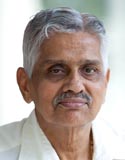 Seetharama A. Acharya, PhD
Seetharama A. Acharya, PhD
Professor, Department of Medicine (Hematology)
Professor, Department of Physiology & Biophysics
Dr. Acharya has developed groundbreaking patents for work on hemoglobin and albumin modification as novel nitric oxide - producing resuscitation fluids with anti-inflammatory activity and an intrinsic ability to increase the efficacy of releasing oxygen from the red cell.
 Craig A. Branch, PhD
Craig A. Branch, PhD
Associate Professor, Department of Radiology
Associate Professor, Department of Physiology & Biophysics
Director, Gruss Magnetic Resonance Research Center, Department of Radiology
Dr. Branch is a biophysicist who uses and develops imaging technology (magnetic resonance imaging and spectroscopy, positron emission tomography and biophotonics) to study in vivo processes in disease and health, including oxygenation and perfusion in transgenic mouse models of hemoglobinopathies.
 Rhoda Elison Hirsch, PhD
Rhoda Elison Hirsch, PhD
Professor, Department of Medicine (Hematology)
Professor, Department of Anatomy & Structural Biology
Dr. Hirsch's expertise is the biophysical characterization of hemglobin mutations as it relates to pathophysiological mechanisms of disease (i.e., the hemoglobinopathies). Her current focus is hemoglobinopathy HbE (β26 Glu →Lys) and its related diseases. She has established transgenic mouse models of HbE hemoglobinopathies to be correlated with biophysical studies (crystallography, spectroscopy) in order to determine molecular mechanisms that give rise to the specific pathophysiology. Dr. Hirsch and colleagues recently discovered that HbE is reduced in function as a nitrite reductase that would result in less nitric oxide production, a compound critical for cardiovasculature physiology.
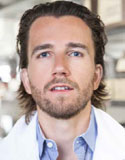 Steven Isaacman, PhD
Steven Isaacman, PhD
Dr. Isaacman founded BioScience LLC in 2006, and currently leads a diverse research team focused on the development of oral medications to treat diseases with high unmet medical need. The Nanometics research program is funded by small business innovation awards from the National Heart Lung and Blood Institute and the National Cancer Institute.
Clinical Team
 Swati Goel, MD
Swati Goel, MD
Dr. Goel's research focuses on patients with blood disorders and blood-related cancers. She has newly joined the team and is accepting new patients with sickle cell disease.
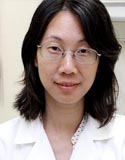 Patricia Shi, MD
Patricia Shi, MD
Dr. Shi is actively involved in expanding future treatments available for people with sickle cell disease and is a leader in ongoing clinical trials for sickle cell patients.
Founders
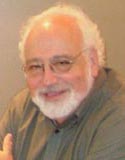 Ronald Nagel, MD
Ronald Nagel, MD
Professor Emeritus, Department of Medicine (Hematology)
Professor Emeritus, Department of Physiology & Biophysics
Dr. Ronald Nagel was a former Chief of the Hematology Division and directed the NIH funded Comprehensive Sickle Cell Center. This Center was the origin for clinical and basic hemoglobinopathy research in the Bronx, focusing on clarifying the varied effects of genetic determinants on the clinical picture of sickle cell anemia.
 Helen Ranney, MD
Helen Ranney, MD
Einstein is home to the Heredity Clinic, founded by the late Dr. Helen Ranney. The Heredity Clinic is the oldest genetic study of blood disorders and a pioneer of the later widespread development of medical genetics units.